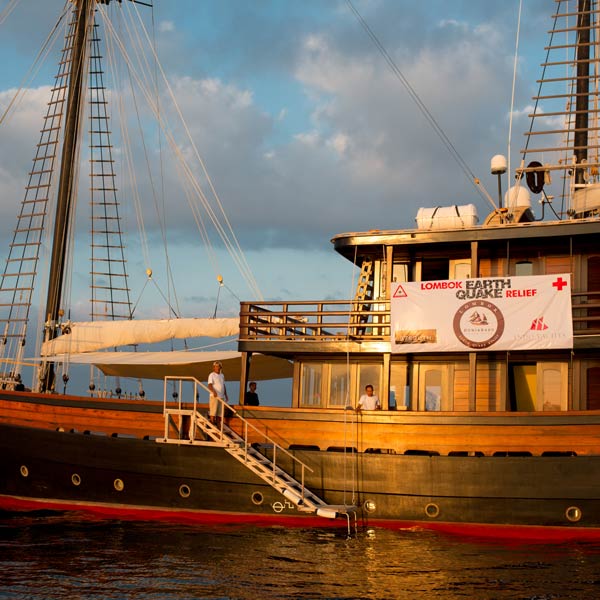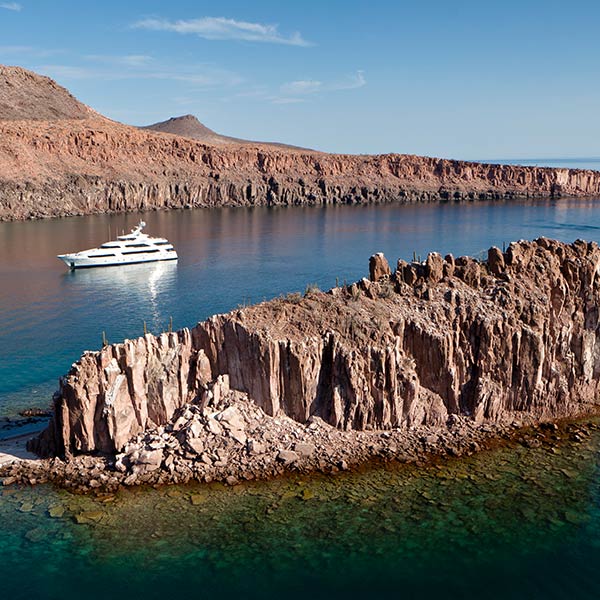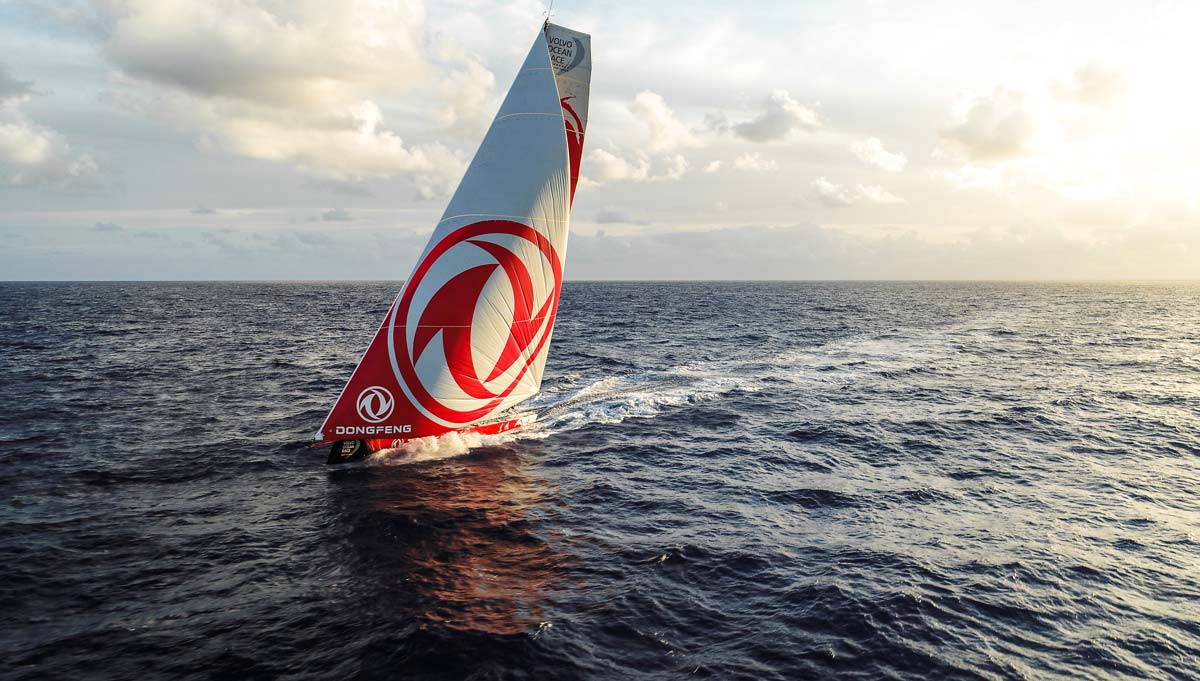
Volvo Ocean Race

Volvo Ocean Race
Sails of the century
Innovation and imagination have powered the sailmaking industry – helping superyachts along the way.
It doesn’t take a rocket scientist to create one of the world’s most famous sail brands, but it helps – and Lowell North is the proof. Back in 1957, the then 30-year old American gave up his career in aerospace engineering to follow his passion for sailing – and more specifically – sailmaking. North Sails was born.
Fast forward 60 odd years and it is clear that his gamble paid off. Today, North Sails is renowned for building some of the world’s fastest and most durable sails. To watch the America’s Cup, or to witness a majestic sailing superyacht slicing through the water is to watch the company’s history in motion, as North Sails’ breakthrough designs push the boundaries of what is possible.
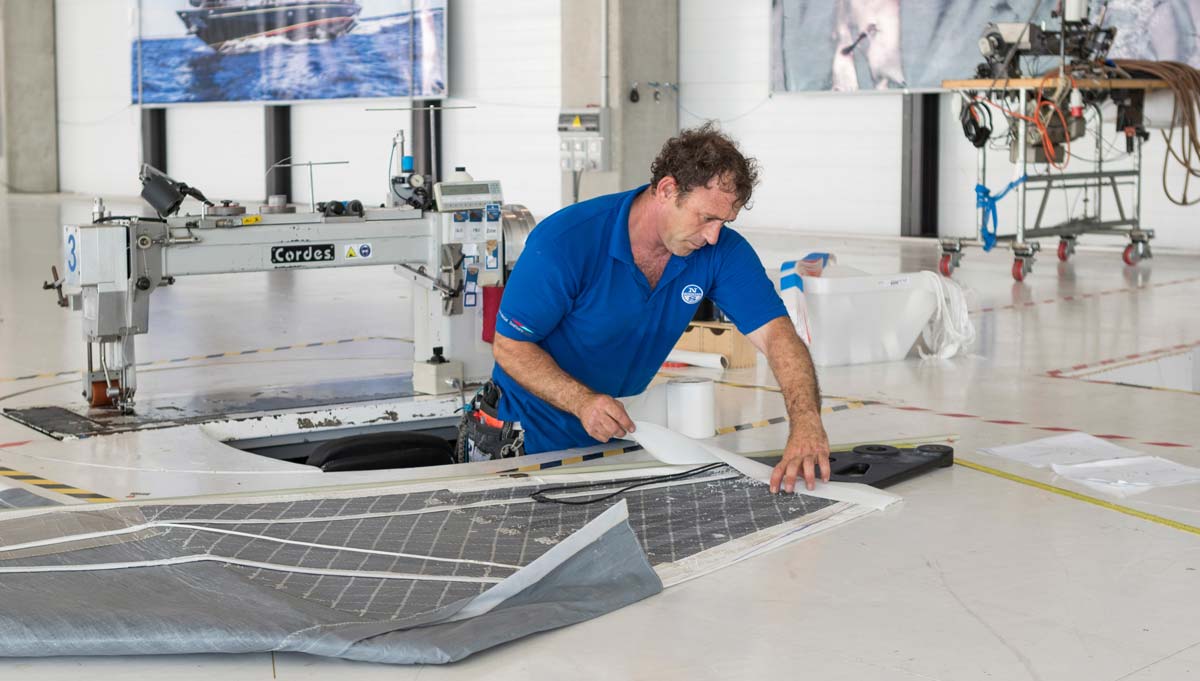
At work in the Palma loft. Image by Ian Roman

At work in the Palma loft. Image by Ian Roman
“North was intrigued with the enigma of fast sail shapes and design,” explains Ben Fletcher, North Sails’ global service manager. “His mantra was to question everything. Nothing was sacred. He pushed all the time to develop new cloths, new operating systems and new techniques.” Ahead of his time, he embraced computer-aided design, ensuring everything could be precisely reproduced. But getting the right people on board was always paramount, too. “Technology was important, but people drove the technology. Lowell recognised that there were two elements and knew that they were not exclusive of one another. Together they were formidable,” says Fletcher.
The company now has sailmaking lofts all over the world, from Sri Lanka to Sydney – Mallorca to Nevada – complete with some of the most talented craftsmen in the business. Unsurprisingly, the best craftsmen are often immersed in the boating life themselves. “Sailors are our best form of long-term staff,” says Fletcher. “These are people who can look at a sail and understand that the wear and tear they are seeing is down to certain factors, and then effect a repair that minimises the problem for the future. That is a better long-term outcome than just replacing like for like and seeing the same problem resurface in a year’s time.”
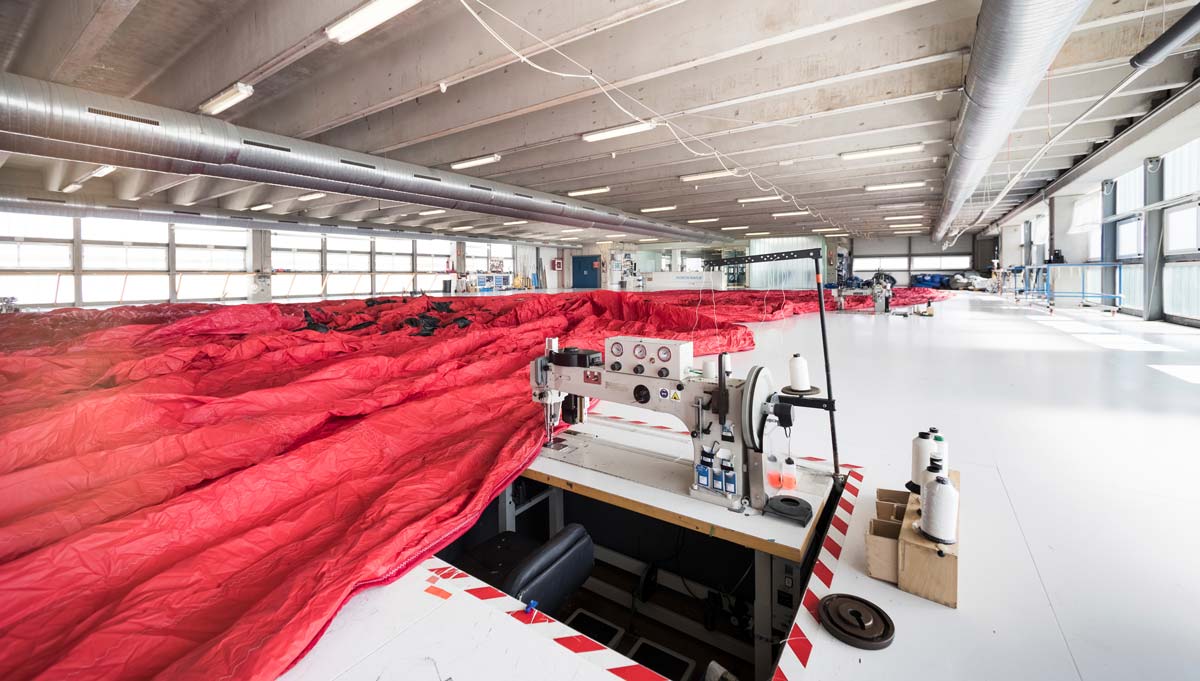
Grand scale sails in Palma. Image by Ian Roman

Grand scale sails in Palma. Image by Ian Roman
The process for designing superyacht sails or racing sails starts with creating an accurate computer-generated model of the yacht, then running multiple variations of the sail and analysing the resulting performance differences. “Once a design has been finalised, then the process of creating that specific sail with multiple layers of epoxy bonded carbon microfilaments over a full size mould begins,” explains Fletcher. It’s a far cry from the woven Egyptian cotton sails of times past, although that’s not to say those traditional techniques have disappeared all together.
“A small cruising yacht might require a low tech, low cost sail,” explains Fletcher. “To build such a sail, the process is the same as it was 60 years ago; take a bolt of cloth, shape the individual panels, sew them together and finish to the required specification. The cloth might be resin impregnated dacron as opposed to Egyptian cotton, but it’s the same process and complexity.”
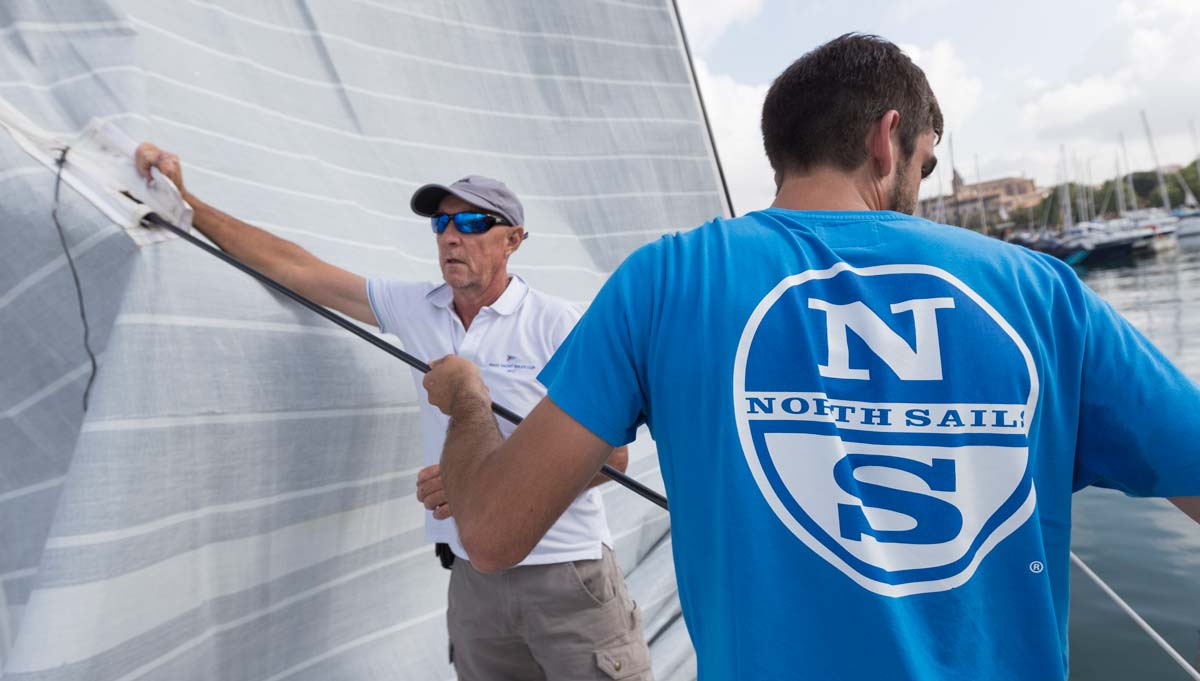
Sail handling on the dock. Image by Ian Roman

Sail handling on the dock. Image by Ian Roman
When it comes to the likes of racing yachts or superyachts though, fully customised carbon fibre sails are the name of the game. “Our biggest innovation in recent years has been the development of our 3Di process, building sails as composite structures similar in style to boat building,” explains Fletcher. “This system has lead to vastly improved shape holding and big gains in longevity.” It seems to be paying off.
This past month alone, North Sails-powered boats have enjoyed victories everywhere from Hamilton Island Race Week, Cowes Week and Copa del Rey. Look a little further back, and there are America’s Cup and Volvo Ocean Race victories galore. There’s plenty of superyacht activity too. At the Palma loft, the company’s biggest, three high profile superyachts (66m Anatta, 58m Kokomo and the 58m Ngoni) are currently in for service along with a fleet of J-Class yachts. Thankfully, there’s plenty of room to cater to boats of such epic proportions. A recent expansion in Palma means there is combined loft space of 6518m² – that includes 42 staff, three vehicles for sail transportation, as well as storage for 2000 sails.
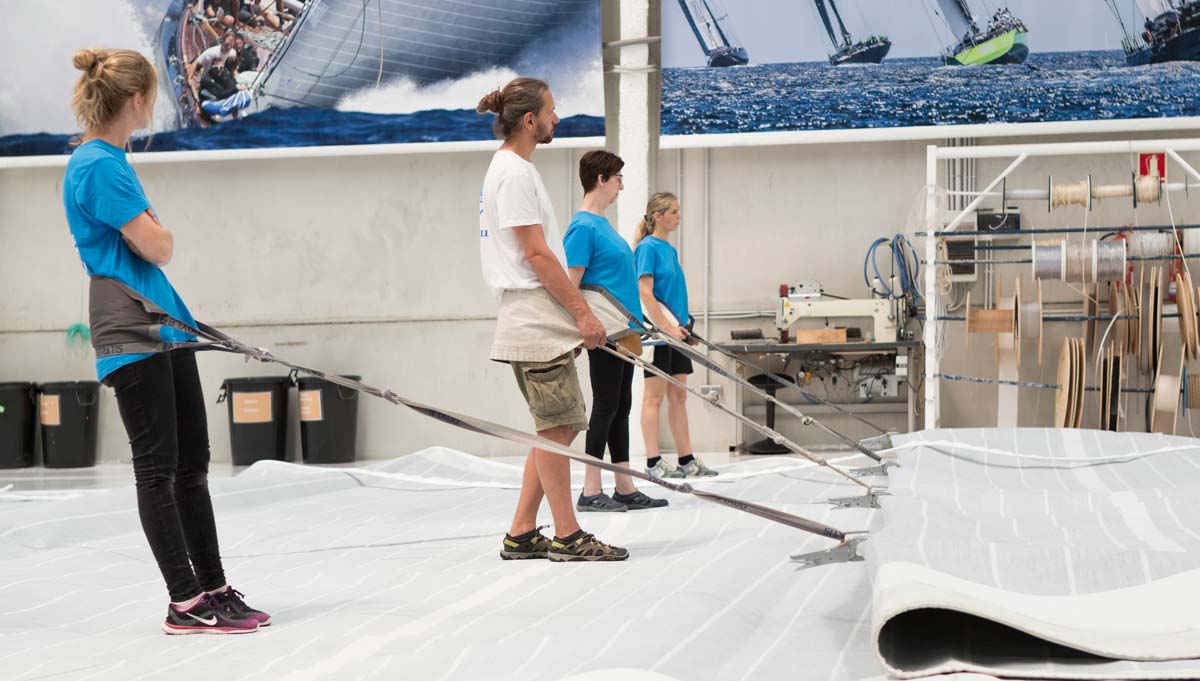
Teamwork in the Palma loft. Image by Ian Roman.

Teamwork in the Palma loft. Image by Ian Roman.
Palma is also the site of the North Sails Environmental Initiative – which aims to lead the industry when it comes to re-using and recycling old sails. “Reducing end waste in all parts of our process is the ultimate goal,” says Fletcher. “There are opportunities not only to recycle sails, but to see old sails used in disaster relief shelters and other such emergency structures.”
Lowell may have retired from sailmaking back in the 80s, but his mantra “you make history by looking ahead” still shapes the company – and indeed the wider industry, today. The future, it seems, will be plain sailing.

